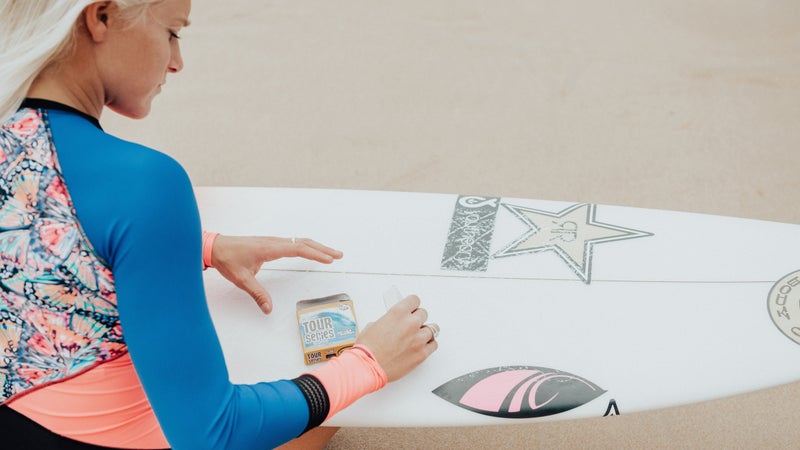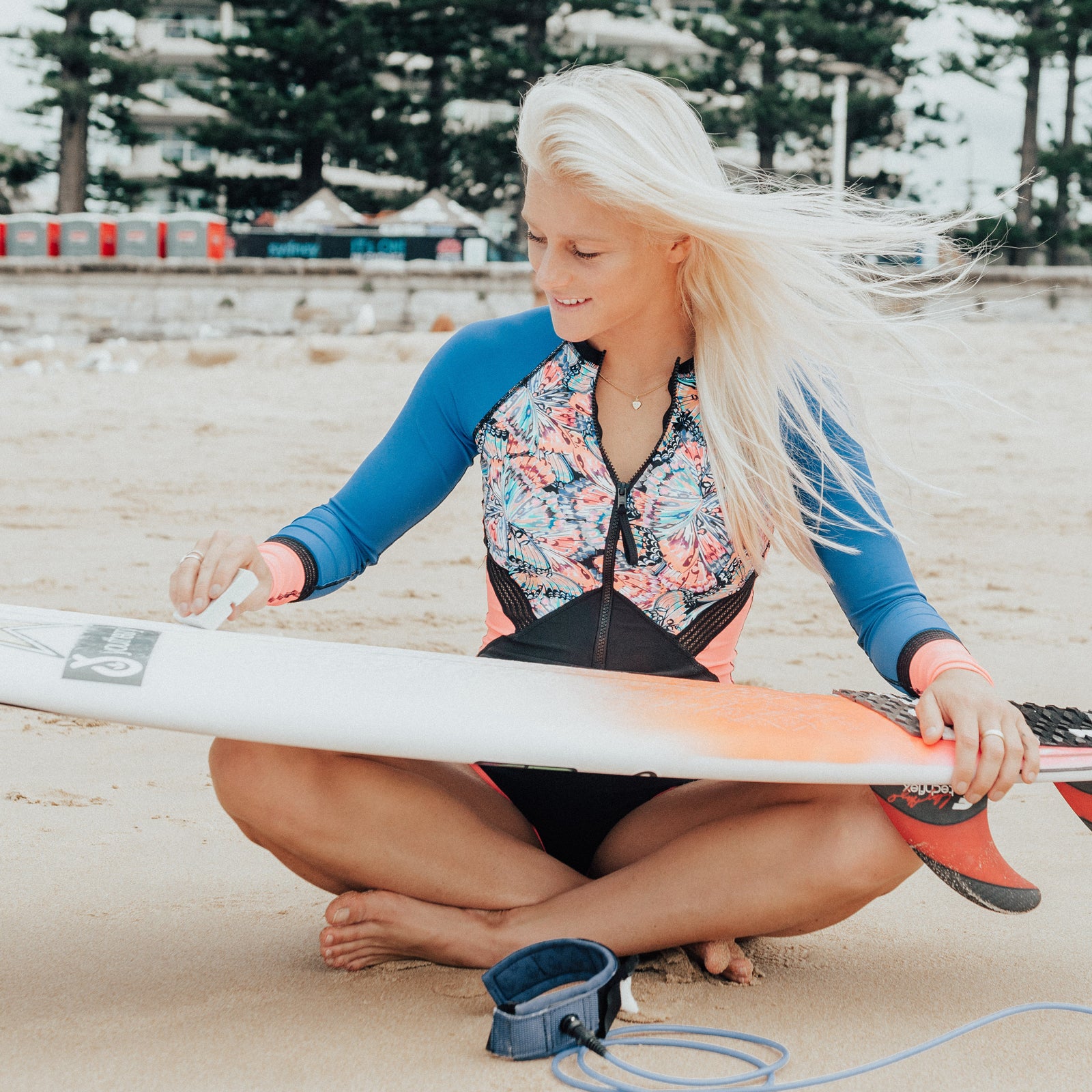Surf wax first gained popularity in 1935 when Los Angeles native Alfred ÔÇťAlÔÇŁ Gallant Jr. to the deck of his board and found that it greatly improved his stability.╠řEver since, wax has become its own corner of the surf industry and the go-to traction tool for millions of wave riders around the world.╠ř
But thereÔÇÖs more to applying wax than just swiping and swimming out. We spoke to some experts to round up everything you need to know about choosing and applying╠řsurf wax.
Choosing Your Wax
When it comes to selecting the right wax, itÔÇÖs not one-size-fits-all.╠řSticky Bumps marketing director Riley Mallard says that when your board is fresh, youÔÇÖll want to start by applying a base: a harder wax like ($9 for three) or ╠ř($5) will help prevent the top coat from rubbing off while you shred. This will last a whileÔÇöit╠řshould only be applied on a new board or one thatÔÇÖs╠řbeen freshly stripped of wax. The top coat, a softer and temperature-specific product like ($15 for six) or ($7), should be reapplied before each session.
When selecting top-coat wax, itÔÇÖs important to factor in the water temperature to get╠řmaximum grip and keep it from╠řmelting. The typeÔÇötropical, warm, cool, and coldÔÇöand temperature range for each wax will be listed on the label, so pick the right one based on where youÔÇÖre headed. If you live or surf in a place where╠řthe ocean temperature fluctuates from╠řseason to season,╠řyouÔÇÖll want to rotate your waxes seasonally. And╠řif youÔÇÖre planning a surf trip, research ahead of time to ensure you pack the correct one.
Although wax is a key tool for surfers, it can also╠řhave a negative impact on the environment. ÔÇťTraditional waxes use paraffin, chemicals, and resin-based ingredientsÔÇöitÔÇÖs like placing gasoline and oil on your board and going into the ocean,ÔÇŁ says Matt Mattoon, founder of Matunas Surf Wax. The chemicals in traditional waxes can not only ╠řbut also affect╠řthe health of the surfer, as they are not biodegradable and can be toxic if ingested. To reduce your carbon footprint and protect marine life, consider purchasing an eco-friendly one from brands like ╠řor╠ř, which are made from natural ingredients like beeswax, clay, and coconut oil. You can also╠ř.
How to Apply It

ÔÇťWhen you have a new board, youÔÇÖll want to start with base coat and do nice, light circles going rail to rail and then tail to tail,ÔÇŁ says Mallard. ÔÇťThe idea is that youÔÇÖre switching directionÔÇöif you constantly wax in one direction, youÔÇÖre never going to get all those amazing little bumps that give you great traction.ÔÇŁ╠řFor most setups, itÔÇÖs not necessary to apply wax all over. You only need to apply it in the zones╠řwhere youÔÇÖll be placing your feet and under your chest, with a little extra coverage for wiggle room.╠řIf you longboard and plan on doing some nose riding, apply wax down the entire length of the board so you can walk╠řaround with ease.╠ř
According to Mallard, if╠řyour board is laden with pressure╠řdings, youÔÇÖll want to use a crosshatch method instead to ensure the wax is sticking to the board. Starting with your base coat, form a diagonal crosshatch pattern on the riding portion of the board. Next, apply the top coat in a small, circular motion over the crosshatched area until obvious bumps form.╠ř
How to Remove Wax from a Surfboard
You donÔÇÖt need to remove wax from your board and reapply it between sessions. According to Mallard, youÔÇÖll know itÔÇÖs time to strip your board when your wax is dirty or begins flaking offÔÇötypically every week or two if youÔÇÖre surfing daily,╠řalthough many surfers go much longer. Travel is also a good opportunity to strip your board and start fresh, as youÔÇÖll likely be surfing in a different climate, and your wax could melt inside your travel bag en route.╠ř
To remove the╠řwax, simply cover the waxed portion of your board with a generous amount of sand and leave it in the hot sun for a few minutes until it melts. Then╠řscrape it clean with a or an old credit card. To get any residual wax off, pour onto a microfiber cloth or an old T-shirt, and wipe the board until itÔÇÖs clean. Now youÔÇÖre ready to apply another coat and get out there again.


